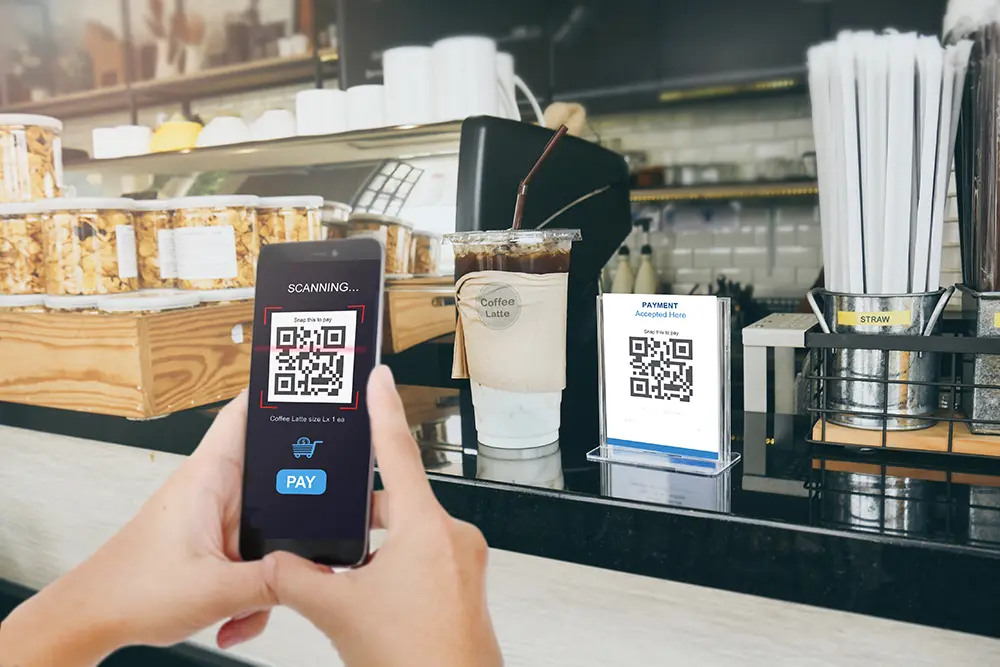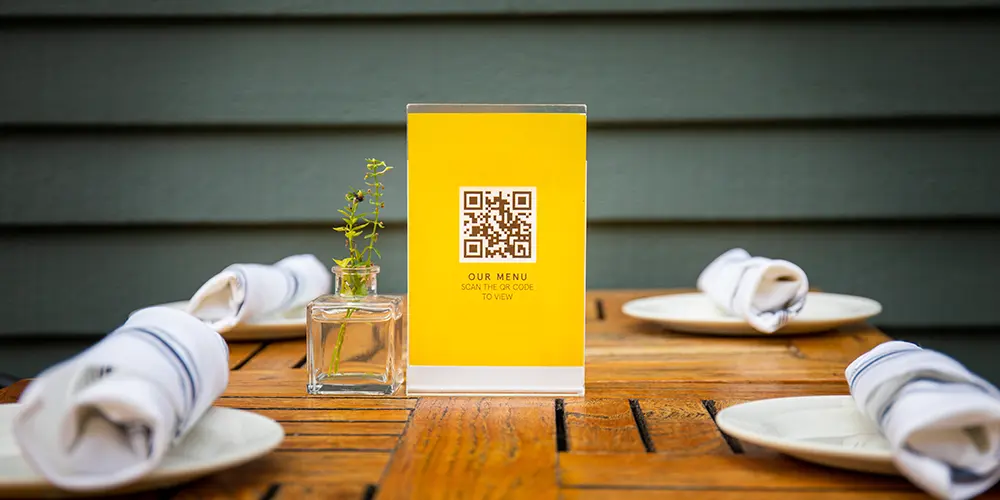Table of Contents
You have probably seen them before, QR codes. They have become increasingly popular in recent years and are the ideal way to connect your offline printed matter to a digital environment such as your website. But what exactly is a QR code? How does it work, and what should you pay attention to when using a QR code on printed material? In this blog, we will tell you all about it!

What exactly is a QR code?
A QR code is a code that you scan with a mobile phone to go to a specific website or other online environment. The code itself is often square and consists of several tiny squares. These squares together form a unique code. You can attach a website or page link to the QR code. So this could be a homepage, a video or, for example, a product page. Because of this versatility, it is used on many products: large on banners or smaller on flyers or even business cards. Lately, you also see it a lot in the hospitality industry. Scanning to get to a digital menu and placing your order there.
Printed matter and QR codes
Personalising printed matter can be done in two different ways:
- A QR code that is the same on every copy
- Each copy has a unique QR code
The first option is generally used most often. The exact same code is printed on every copy, so everyone is directed to the same URL. You already include this code in the design and can create it via a generator. You enter the desired URL here, and the generator creates a code you can use in your design.
Sometimes, you don’t want to use one page but want to give everyone a unique URL. This is often done on tickets and admission tickets, for example. You do not have to create a code for each copy; we can do that for you. Choose ‘Personalise’ as an extra option. You can then e-mail a list of data to us so that we can create unique QR codes.
Format
It is important that your code can be scanned properly. Too big is awkward, but too small causes problems. It is important to know the approximate scanning distance. If you know this, you can also figure out the size easily. We have picked out the best sizes for you for common products:
Scanning distance * Format QR code * Example printed matter
10 metres * 38 x 38 cm * Roadside banner or billboard
1.5 metres * 9.5 x 9.5 cm * Posters
Approx. 20 cm * 2 x 2 cm * Flyers or business cards
Clear QR code
The small squares together form the unique code that refers to a page. The more characters the URL has, the more squares are used. Especially with the smaller QR codes, this can cause problems with long URLs. This is because the squares are too close together and cannot be distinguished by the camera. For a code that works well, it is then best to shorten the URL. This can easily be done via sites like Bitly or Ow.ly. You enter the URL here, and it will automatically make a shorter link that you can use. A short link means fewer squares and, therefore, a clearer code. This way, you can be sure that scanning won’t cause any problems!
Testing
Before you place a full order, testing the QR code again is always useful. You can do this via a screen by opening the file at full size and scanning it. As it may still come out differently printed on paper in some cases, you can also print a full-size printout via your own printer. If you have the option, try it with different phones. Android and Apple can sometimes react differently and make your test complete.
Checklist QR code on printed matter
- Provide a good QR code as a vector file (.eps), possibly with a shortened URL;
- Or supply a list with all the information so that we can generate the QR codes;
- Provide the correct format so that scanning works smoothly;
- Test the QR code at full size on both screen and paper and with different phones.
Everything good and working? Then you can order printed matter with a QR code! Will it be magazines? Flyers? Books? We will be happy to get to work for you. And if you have any questions, we will be happy to help.
Looking for a reliable printing company?
Get an instant quote